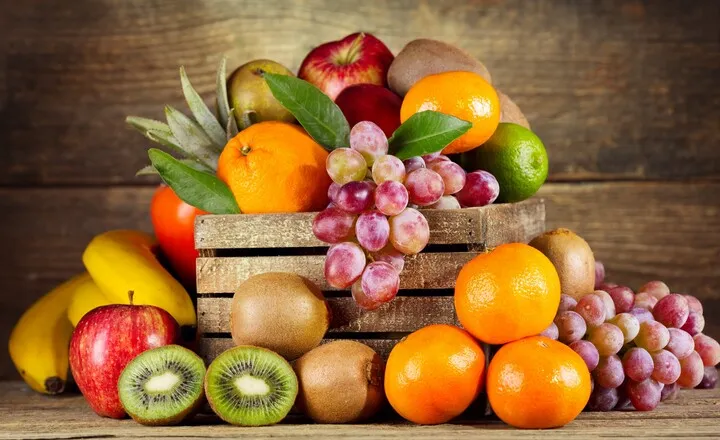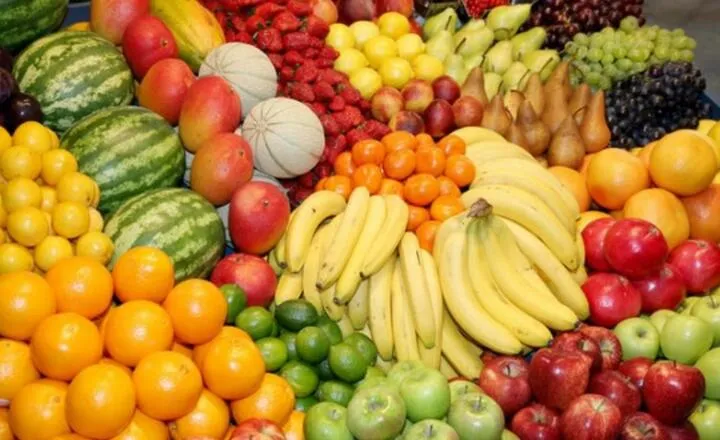The decline in fruit flavor can largely be attributed to modern agricultural practices, which prioritize durability and shelf life over taste. With an ever-increasing demand for mass production, farmers often opt for hybrid varieties engineered to resist pests and last longer during transport.
This focus on physical attributes means that the natural essence those nuanced flavors and aromas takes a backseat, leaving many fruits with bland or muted profiles.
1. Seasonal Factor
Seasonal factors play a crucial role in the growth and flavor of fruits, as each type thrives under specific weather conditions. Winter fruits like pears and tangerines benefit from the cooler temperatures and shorter daylight hours, which help them develop their unique sweetness and texture.
Spring fruits such as pineapples and strawberries flourish in warmer temperatures with ample sunlight, allowing them to reach their peak ripeness and flavor profiles.
Modern agricultural practices often prioritize year-round availability over seasonal growing cycles. This shift has led to the mass production of fruits that are harvested before they fully ripen or are artificially treated to prolong shelf life.
Many consumers notice a decline in taste and quality compared to what was once enjoyed during peak seasons.
2. Geographical Location
Each fruit has specific environmental requirements, including soil type, climate, and sunlight exposure, which contribute to its unique taste profile.
For example, strawberries grown in the rich volcanic soils of California may develop a sweetness and juiciness that is hard to replicate in cooler climates like Vancouver or Montana.
When fruits are grown outside their native environments, they often lack the ideal conditions needed for optimal growth, resulting in inferior flavors.
The concept of terroir—often associated with wine but applicable to many crops—highlights how local conditions affect the characteristics of produce.
Factors such as temperature fluctuations, rainfall patterns, and even local farming practices can influence the taste of fruits. When fruits are imported from regions where they are not indigenous, they may be harvested prematurely to withstand long transport times, which further diminishes their flavor potential.
3. Artificial Ripening
The appeal of supermarket fruits is largely driven by their visual presentation, which is enhanced through the use of artificial ripening agents. These agents help achieve uniform color and texture, making the fruits more attractive to consumers.
This process often compromises the natural flavor and aroma that come from true ripening. Fruits are typically harvested while still green to withstand transportation, and once they reach their destination, they are artificially ripened to meet consumer expectations for appearance.

This reliance on artificial methods can lead to a significant difference in taste compared to fruits that have been allowed to mature and ripen naturally on the tree or vine.
The natural ripening process not only develops the fruit’s characteristic flavors but also enhances its nutritional value. Many people find that store-bought fruits lack the depth of flavor they remember from locally sourced or homegrown produce.
This shift highlights the importance of understanding where our food comes from and considering alternatives like farmers’ markets or home gardening for a more authentic taste experience.
4. Plant Breeding
The debate over genetically engineered fruits often centers around their aesthetic appeal and practical benefits, such as yield, durability, and pest resistance. While these enhancements make fruits more marketable and easier to transport, they can inadvertently compromise flavor.
As highlighted in studies like the one reported by the Guardian on tomatoes, essential volatile compounds that contribute to taste may be lost in the pursuit of perfection in appearance and shelf life.
This situation creates a paradox for consumers who prioritize flavor over visual standards. Locally grown produce, even if it appears less appealing or has irregular shapes, often retains a richer taste profile due to its genetic diversity and traditional cultivation methods.
While genetically engineered fruits have undeniable advantages for growers and distributors, they may not always satisfy the palate of discerning eaters who seek authentic flavors in their food.
5. Climate Change
It is indeed reshaping the agricultural landscape, and apples are a prime example of how rising temperatures can impact fruit quality. Research conducted in Japan has shown that an increase of approximately 3.5°F can lead to significant changes in apple sweetness and overall flavor.
As temperatures rise, the metabolic processes within the apple trees alter, affecting sugar accumulation and leading to less flavorful fruit.
This decline in sweetness not only diminishes the eating experience but also poses challenges for growers aiming to meet consumer preferences.

Climate change contributes to a rise in pest populations and diseases that threaten apple orchards. Warmer conditions create a more favorable environment for pests, which can damage crops and further compromise their quality.
As researchers continue to study these effects, it becomes increasingly clear that climate change isn’t just an environmental issue; it’s also impacting our food systems and the flavors we cherish in everyday fruits like apples.
Addressing these challenges will require collaborative efforts between scientists, farmers, and policymakers to adapt agricultural practices and mitigate the effects of climate change on our food supply.
Finding Food With Flavor
The best way to ensure that you have access to delicious, ripe fruits is by growing your own. By cultivating varieties that are indigenous to your area, you can enjoy fresh produce at its peak flavor.
Local seeds often yield the most vibrant and tasty fruits, so connecting with local gardeners or researching online can lead you to the best options for your garden.
Another excellent alternative is visiting farmer’s markets. These markets typically feature fruits that are grown locally and harvested at their ripest, ensuring maximum flavor.
Unlike supermarket produce, which may be picked early for shipping purposes, farmer’s market offerings often burst with taste because they are sold shortly after being harvested.
Conclusion
The decline in fruit quality and flavor can be attributed to a combination of industrial farming practices, selective breeding for yield over taste, and the environmental factors that affect growth.
We often overlook the importance of supporting local farmers who prioritize biodiversity and sustainable methods that enhance flavor. Being mindful of the seasonality of fruits can lead to more enjoyable and vibrant tastes. By taking these steps, we can help revive the natural sweetness and richness that fruits once offered.
FAQs
How can I increase the sweetness of my fruit?
Fruits typically become sweeter as they ripen because starches convert to sugars. If you have unripe fruit at home, allow it to sit at room temperature until it reaches optimal ripeness.
What nutrient makes fruit sweeter?
The primary nutrient that makes fruit sweeter is sugar, particularly fructose, which is a natural sugar found in many fruits.
